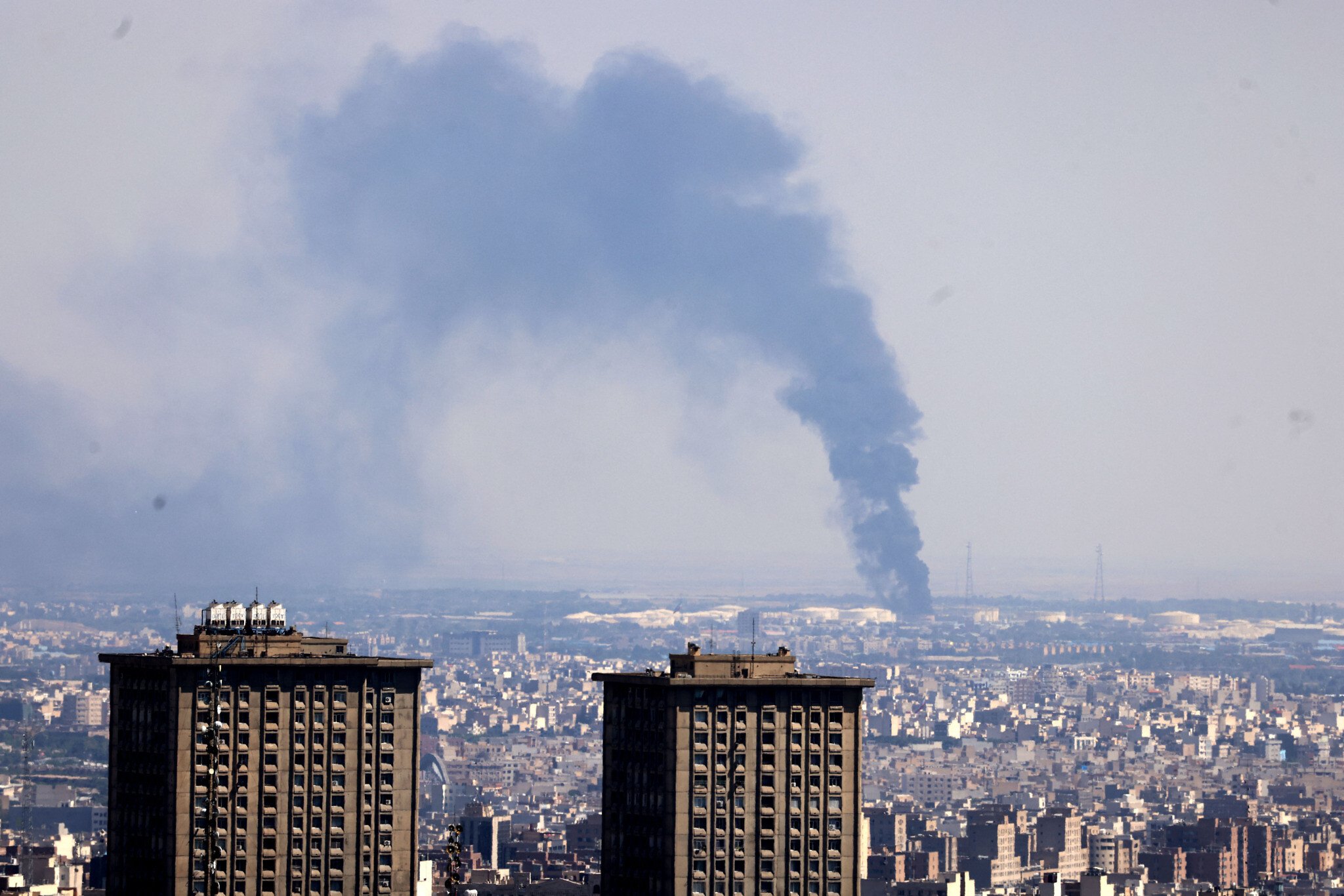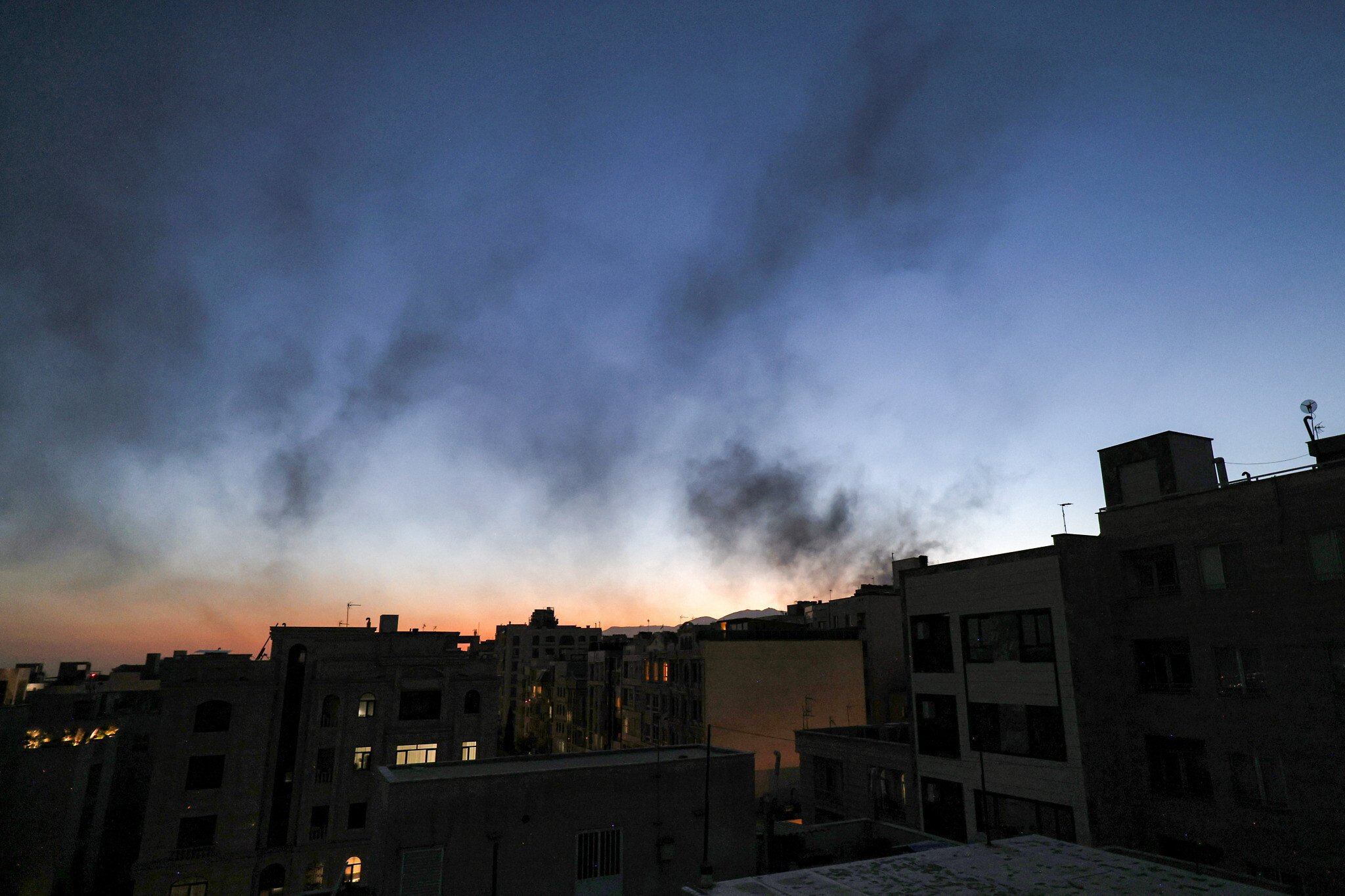



The Israeli military estimates it will achieve its objectives against Iran’s nuclear program within a week or two, Israel Defense Forces officials told reporters on Tuesday.
The estimation came as Israel continued to operate against the Islamic Republic’s forces and nuclear program, with the Israeli Air Force conducting a wave of airstrikes against Iranian ballistic missile launchers in western Iran, the IDF said.
The military said fighter jets hit dozens of launchers and other facilities.
IDF Spokesman Brig. Gen. Effie Defrin said Tuesday evening that 60 Israeli Air Force jets set out for an “extensive wave of strikes in the heart of Iran” several hours earlier, targeting launchers aimed at Israel.
He said that because of Israel’s strikes in recent days, Iran’s forces have withdrawn to central Iran. “Now, they are putting efforts into launching [missiles] from Isfahan.”
“They withdrew from western Iran, but we are coming after them,” he said.
Additionally, since Tuesday morning, the IDF said it struck Iranian air defense systems and radar sites in western Iran, publishing footage of some of the strikes.
Since the beginning of the operation, the IAF has destroyed 70 Iranian air defense batteries in Iran, according to the military as of Tuesday.
In the first 24 hours of the operation, which started early Friday, over 40 Iranian air defense systems were struck, according to the IDF, giving the IAF air supremacy over western Iran and Tehran.
But the IDF has said flying over Iran is still not risk-free.
Since then, another 30 systems have been targeted in waves of strikes, opening up a path for IAF fighter jets and drones to operate deeper within Iran, the military said.
IAF Chief of Staff Maj. Gen. Tomer Bar said Tuesday that the strikes on the Iranian air defense systems are “a historic mission that could change the entire course of the campaign.”
The military also said IAF drones were continuing to hunt down surface-to-air missile launchers and radars across the country.
The military published footage showing the identification of Iranian preparations to launch ballistic missiles at Israel, and a subsequent strike against them on Tuesday, while another video showed a strike on an Iranian air defense system at one of the sites.
The IDF has said that some 40 percent of Iran’s ballistic missile launchers, or some 200, have been destroyed or neutralized so far amid the operation. This has apparently played a role in limiting Iran’s missile fire on Israel in the past two days.
Iran has been launching smaller salvos of missiles at Israel over the past day because its capabilities have been degraded by Israeli strikes, the IDF believes.
According to IDF assessments, Iran is not trying to conserve missiles for a longer war, but rather, is struggling to coordinate larger attacks.
On Tuesday evening, loud blasts were heard across the Iranian capital, AFP journalists reported. The blasts were heard in north, west and central Tehran, according to the journalists. It was not immediately clear whether the blasts were the result of incoming Israeli strikes or Iranian air defense fire.
Israel set out on the operation in Iran on Friday with the objective of removing the “existential threat” of the Iranian nuclear program and ballistic missile capabilities.
The IDF has so far bombed two Iranian nuclear enrichment facilities, Natanz and Isfahan, causing significant damage to both. It has also killed at least nine key nuclear scientists who were allegedly working on a bomb, and struck several other facilities supporting Iran’s nuclear program, including offices and command centers.
The IDF said it has so far caused significant damage to Tehran’s ability to build a bomb, but the efforts are not over yet. It said it will detail the damage it has done to Iran’s nuclear program when the operation is over.
The military has so far denied striking the underground Fordo nuclear facility, but said it is in its “bank of targets.” Defense Minister Israel Katz said earlier that Fordo is “an issue that will certainly be addressed.”
In terms of Iran’s military, the IDF said it has killed dozens of commanders, including the vast majority of the top leadership of the Islamic Revolutionary Guard Corps and the Iranian Armed Forces. Military officials said Israeli forces had killed three times more Iranian commanders than they had initially anticipated when planning the operation.
IDF Operations Directorate chief Maj. Gen. Oded Basiuk asserted Tuesday that Israel’s operation against Iran will not end until the IDF has removed the threat of its nuclear program and ballistic missiles, but refused to provide a timeline.
“We continue to strike nuclear targets to deepen the achievement, according to a plan and at a timing that suits us,” he said in a call with reporters.
“We are striking the terror regime, not the people, who deserve a better future. Those who endanger us are the leadership in Tehran, not the people walking the streets of Shiraz,” Basiuk said. “We will remain prepared on defense. I assess that the Iranians will continue to try to harm Israel.”
Basiuk said the IDF “will not allow a nuclear Iran to turn the Middle East into a graveyard.”
Israel says its sweeping assault is necessary to prevent its longtime adversary from getting any closer to building an atomic weapon. At the beginning of the campaign on Friday, it said the situation had become an immediate existential threat to the Jewish state.
Iran, which regularly calls for Israel’s destruction, insists that its nuclear program is peaceful; however, it has been enriching uranium to levels that have no peaceful application, has obstructed international inspectors from checking its nuclear facilities, and has greatly expanded its ballistic missile capabilities.
IDF Chief of Staff Lt. Gen. Eyal Zamir on Tuesday visited the scene of an Iranian ballistic missile impact in Bat Yam, saying, “Civilian resilience is critical for us. It’s a central component of our ability to continue functioning.”
Nine people were killed in Sunday’s attack.
“We are fighting a war here that leaves us no choice, and it is being conducted across all dimensions. We are determined to complete our missions, and everything we were tasked with, we will achieve,” Zamir told Home Front Command officers in a video published by the IDF.
“We are in an extraordinary moment. Right now, we are hunting ballistic missiles, there are UAVs out there, our fighter jets are involved, it’s something crazy: 1,500 kilometers from Israel, we’re tracking and destroying those ballistic missiles,” he said.
“Now your layer comes in, and it’s a very significant layer in the sense that when something hits, forces are on the ground, and people draw strength from seeing you,” he told the Home Front Command officers. “You arrive quickly, rescue people safely, treat the wounded, and sadly, there are also fatalities in these events.”
“Civilian resilience is critical for us. It’s a central component of our ability to continue functioning. You said it yourselves: We’re not stopping now. Why aren’t we stopping? Because the home front’s resilience is strong. When the resilience of the home front is strong, we have the confidence to keep operating,” Zamir said.
So far, 24 people have been killed and more than 500 wounded in Iran’s ballistic missile attacks, launched in response to the surprise campaign against the Islamic Republic.
Israeli strikes on Iran have killed at least 224 people, according to Iranian officials.
Agencies contributed to this report.



